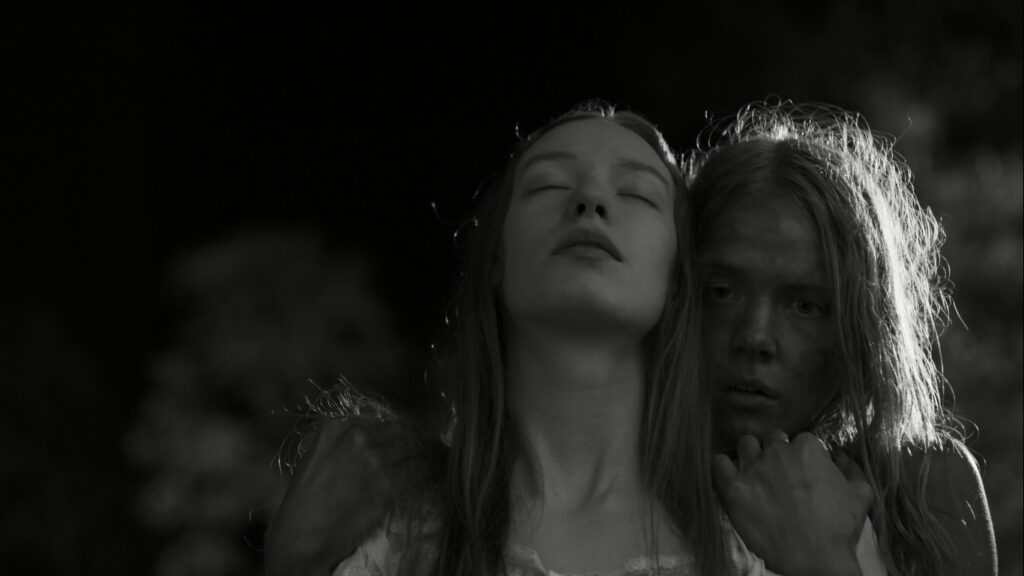
Andrus Kivirähk’s novel Rehepapp ehk November, published in 2000, examines and satirizes the roles that superstition and religion play in humanity’s everyday life via a fantasy story set in 19th century Estonia. Rainer Sarnet’s film adaptation of Kivirähk’s novel, November (2017), embraces the world suggested by Kivirähk’s text. Sarnet’s film is a kind of portrait of Kivirähk’s imaginary village that is steeped in folklore and fairytale traditions.
Sarnet never feels compelled to explain most of the fantastic images the audience sees as they see them. Small details, motives, and the like are revealed overtime. November‘s loose vignette structure is linked together in this way. For instance a detail regarding the selling of one’s soul to the devil in one episode will be revealed some forty minutes later in a different episode. Of course major events (the plague, the arrival of the baroness, etc) serve to link the many parallel narratives of village life as well.
Sarnet’s work as a storyteller is economical and powerfully emotive in November. Mart Taniel’s cinematography does wonders for Sarnet’s highly imaginative images, casting them in quietly surreal black and white compositions. Few feature films so completely embrace the inherent dream logic of the subconscious, let alone locate and explore its connection to the superstitions and instinctual fears that lay behind every folk tale. From its overwhelmingly bizarre opening onwards, one is caught up in the strange spell that November casts which seems to tap into the most obscure recesses of the spectator’s mind. The uncanny images and macabre tone of November do not detract from the tragically romantic narrative that forms the backbone of the film’s structure.
At it’s heart Sarnet’s film is a story of unrequited love. Liina (Rea Lest-Liik) has fallen in love with Hans (Jörgen Liik) who is infatuated with a sleep walking German baroness (Jette Loona Hermanis). Liina has, in her pursuit of Hans, taken the form of a wolf, communed with her dead mother, and even invited the plague. Ultimately it’s Hans’ “kratt” (a body made of inanimate objects given a soul from Hell by the devil) that enables Hans to truly see Liina for the first time romantically. Liina herself, appearing in a beautiful gown, is dressed to resemble the baroness. After gazing at one another all night, Liina leaves for home, unaware that moments later Hans dies as the devil has come to collect his due. The thrust and momentum of November rests entirely in this narrative. All of the other vignettes hang on this one story. It’s a structure that works, resembling the character oriented tableaus of Robert Altman.
November is one of those films that is tremendously influential but very discreet about it. The acclaimed psychological thrillers of Ari Aster and Robert Eggers have been profoundly affected by Rainer Sarnet’s film. This is a film whose public estimation and popularity will surely grow with time. Though it’s doubtful many other filmmakers would posses the ability to so affectively channel Jan Švankmajer.
